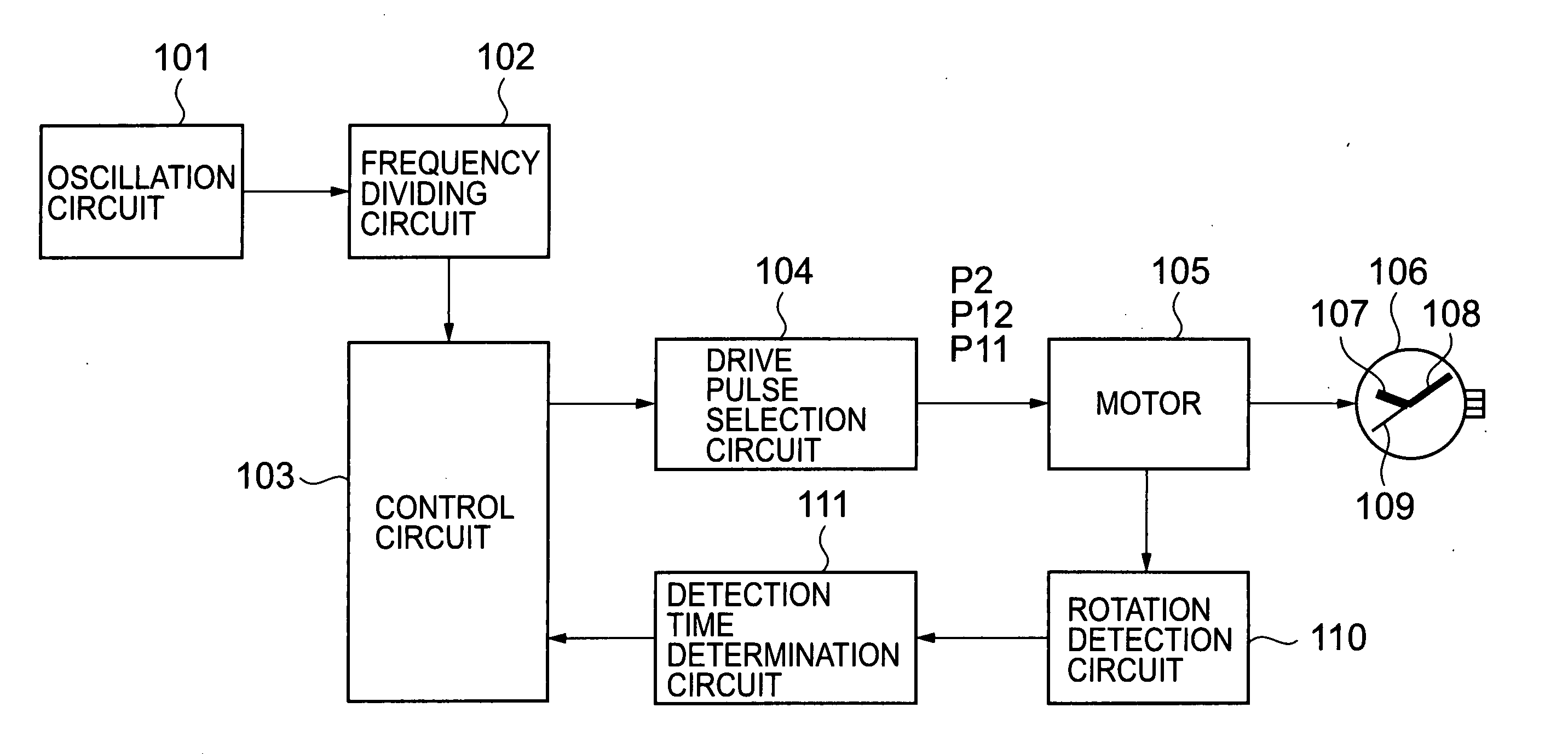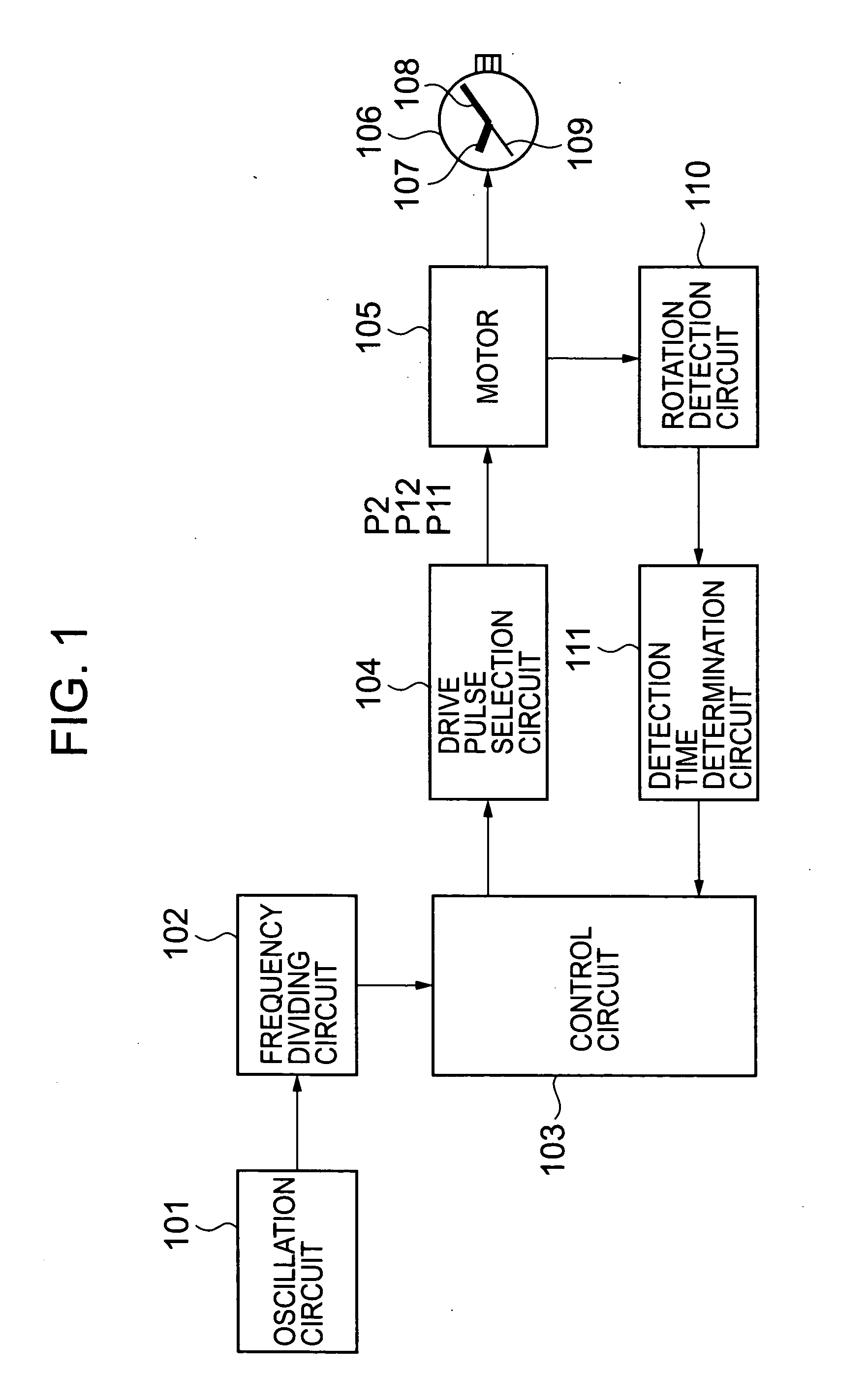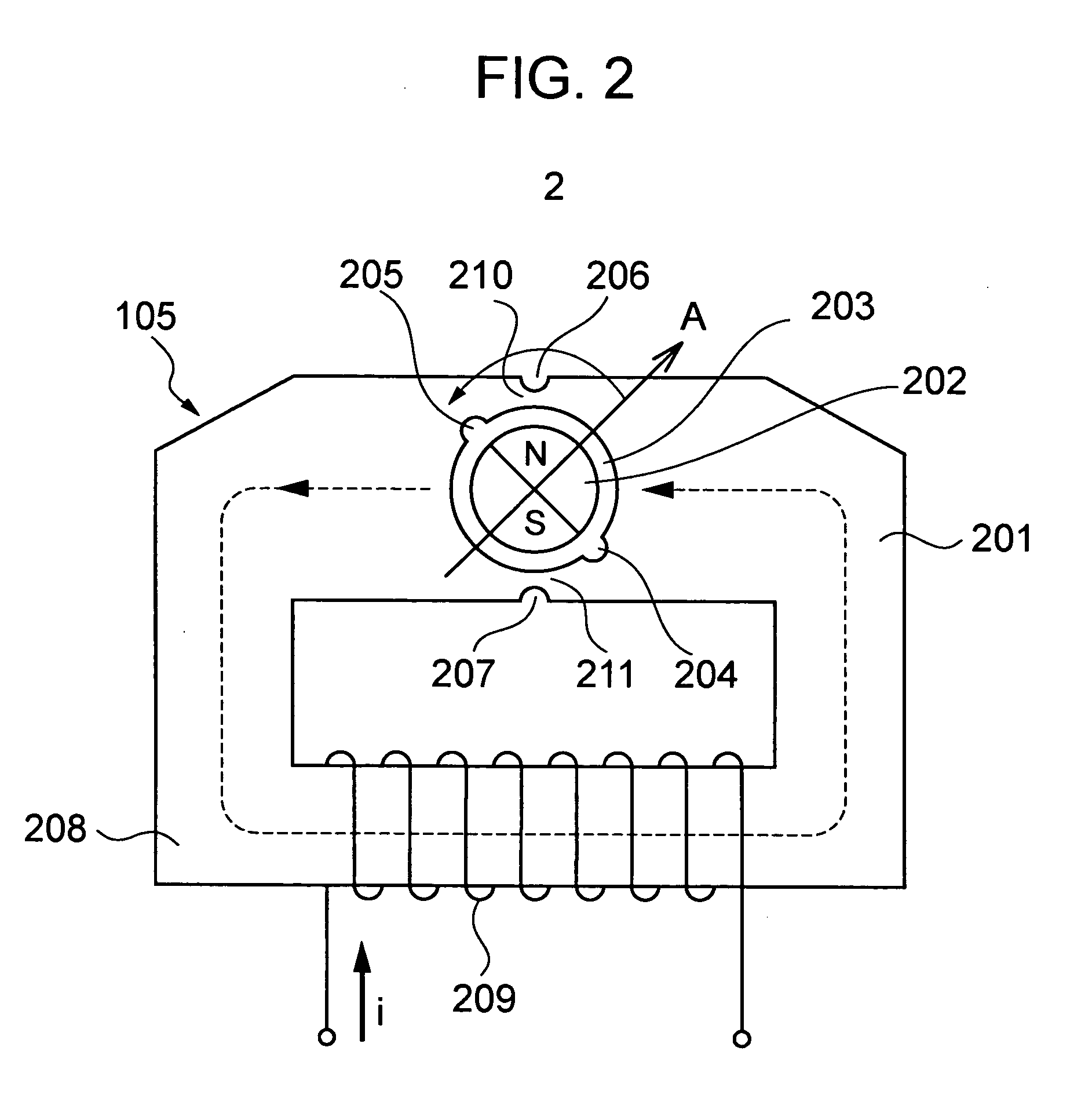Analogue Electronic Clock and Motor Control Circuit
an electronic clock and digital technology, applied in the direction of motor/generator/converter stopper, dynamo-electric converter control, generating/distributing signals, etc., can solve the problem of increasing power consumption, complicated circuit constitution, and inability to reduce the size of ic chips
- Summary
- Abstract
- Description
- Claims
- Application Information
AI Technical Summary
Benefits of technology
Problems solved by technology
Method used
Image
Examples
Embodiment Construction
[0058]FIG. 1 is a block diagram of an analogue electronic clock according to an embodiment of the present invention and shows an example of an analogue electronic wrist watch.
[0059] In FIG. 1, the electronic clock includes an oscillation circuit 101 which oscillates a signal of a predetermined frequency, a frequency dividing circuit 102 which generates clock signals which become references at the time of timer counting by dividing a signal generated by the oscillation circuit 101, a control circuit 103 which performs controls such as a control of respective electronic circuit components which constitute the electronic clock, a change control of drive pulses and the like, a drive pulse selection circuit 104 which selects and outputs a drive pulse for motor rotational driving based on a control signal from the control circuit 103, a motor 105 which is rotationally driven based on the drive pulse from the drive pulse selection circuit 104, an analogue display part 106 which includes t...
PUM
 Login to View More
Login to View More Abstract
Description
Claims
Application Information
 Login to View More
Login to View More - R&D
- Intellectual Property
- Life Sciences
- Materials
- Tech Scout
- Unparalleled Data Quality
- Higher Quality Content
- 60% Fewer Hallucinations
Browse by: Latest US Patents, China's latest patents, Technical Efficacy Thesaurus, Application Domain, Technology Topic, Popular Technical Reports.
© 2025 PatSnap. All rights reserved.Legal|Privacy policy|Modern Slavery Act Transparency Statement|Sitemap|About US| Contact US: help@patsnap.com



